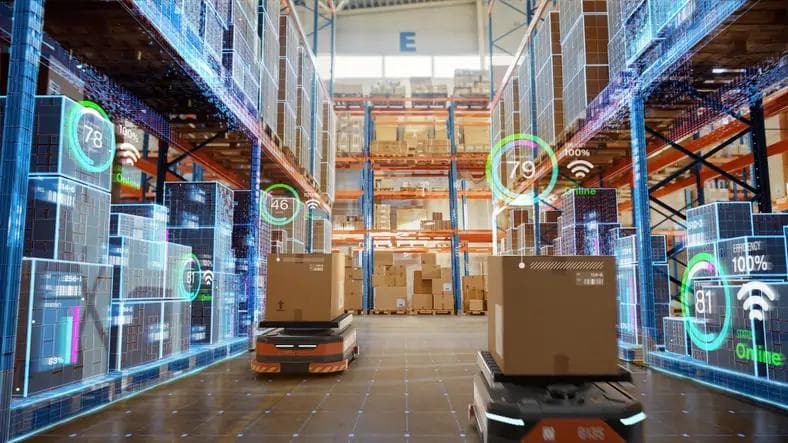From Strategy to Action: How to ‘Break the Code’ of Analytics at Scale in Retail and CPG
From Strategy to Action: How to ‘Break the Code’ of Analytics at Scale in Retail and CPG
Published by Jessica Weisman-Pitts
Posted on December 21, 2021

Published by Jessica Weisman-Pitts
Posted on December 21, 2021

By Chris Hillman, Teradata’s Data Science Director EMEA and Chris Newbery, Teradata’s Industry Consultant Retail/CPG EMEA
A recent McKinsey&Co article outlines the challenges retail and CPG companies face when trying to ‘break the code’ of digital analytics. They, in common with our own consultants, perceive the need for the retail and CPG leaders of the future to successfully leverage analytics at speed and scale to drive performance. By their estimates, leaders have already delivered more than triple the total return to shareholders than the laggards in this area!
REALISING VALUE FROM ANALYTICS IN RETAIL
We all recognise the drivers: unprecedented changes to consumer behaviour, radically intensified competition, highly pressured margins and rapidly evolving sales channels – all accelerated by the COVID pandemic. McKinsey reflects our thinking on two further points of specific relevance to the Chief Data Officer: the need to create a simplified enterprise data architecture, and to give flexibility to quickly deploy and reuse analytics across the organisation. However, the challenge we encounter every day is that moving from understanding the requirements, to implementing solutions, is never as easy as companies hope. We see a big discrepancy in the industry between recognition of the need to change (which most understand is required) and the ability to deliver the transformation (with many unable to do this anywhere near quickly enough). McKinsey suggests that only 20% of CPG businesses are realising value from analytics at scale, and that reticence to invest and scale-up quickly is at least partly to blame.
HARMONISING DATA AT SCALE
Looking at just two dimensions of McKinsey’s matrix illustrates that with a strategic road map that builds on proven frameworks, the CDO can quickly show significant return on investment and provide the basis for multiplying benefits. Many retailers and CPGs have difficulty in harmonizing data at scale and creating production pipelines that unify data to deliver reusable features. Simply put, too much data resides in silos, only feeding individual departmental insights. Data is seldom shared or re-used, and looking for data, even within a specific area of the business, is difficult and time consuming. Attempting to integrate data sets across stores, geographies, ERP systems, product lines or departments is often all but impossible. These factors are why highly skilled and in-demand Data Scientists spend up to 80 percent of their time just preparing data. Worse, once all that effort has been made, the results are often forgotten, and the next project starts from scratch all over again!
An Enterprise Feature Store implemented on Teradata Vantage can help retailers and CPGs overcome these bottlenecks. Prepared, integrated and performant data features are catalogued and stored in a referenceable library from where they can be reused by other Data Scientists across the entire business; thereby reducing huge amounts of time/money/data duplication, as well facilitating a more efficient processes that will deliver wider implementations of AI and Machine Learning to support multiple business cases.
Crucially, the Enterprise Feature Store approach accumulates value. Start with a small discrete project which will prove the concept and establish the first features in the store. Subsequent projects can then reuse these as they build out the store. The more projects and the more features, the more value is driven. The more value is driven, the more they get developed, and you are rewarded with a virtuous cycle of return on investment.
ALIGN AND ACCELERATE ANALYTICS DEPLOYMENT
The second of McKinsey’s dimensions to highlight is the need to align analytics vision, talent, and tools. Many in the sector continue to struggle to deploy analytic models with the flexibly required. Different Data Scientists use different languages to create their models, using bespoke pipelines that lead to technical debt (what happens when they leave?) and make it hard to deploy at scale. Instead, huge swathes of data are copied and moved to silos where they increase overall costs and quickly become out of date.
The Teradata Analytics 123 approach provides a formula to overcome these hurdles. The Enterprise Feature Store provides a trusted repository of proven features, while delivering the security, privacy and governance required to build trust. Data Scientists can then use their preferred modelling language(s) to develop the analytics using trusted features, and seamlessly deploy/execute them in Teradata Vantage on live data. Data movements are minimised, and real-time dashboards, automated actions and all other advanced analytics can run from live data, placed at the heart of the decision-making process.
SIMPLE, EFFICIENT, REUSABLE
Working closely with the biggest retailers and CPGs across the world, Teradata has helped them take these vital steps. A typical engagement starts with using integrated data from two or three functions or systems to answer a specific business issue – for example, Teradata worked with a French grocer to better understand price drivers on a selection of SKUs and quickly increased profit margins by 5-10%. Once proven, the concept can then be extended to additional lines and locations. The features created are then re-used to drive complementary business analysis and so the benefits multiply. In many cases these solutions leverage existing data, technologies and platforms simply by providing a better unified and more efficient analytics pipeline.
It is clear to most retail and CPG businesses that current ‘manual’ and fractured approaches to analytics within their businesses are not sustainable. Mainstream retail/CPG businesses are deploying a few million predictive models at best – but to compete in this new environment they will need to scale and deploy hundreds of millions of models in production. Breaking the code of analytics is not a ‘once and done’ action; it is not a sprint, but more of a relay race. Sequential projects will piece together the crucial elements of an enterprise-wide data platform and enable fast, flexible deployment of analytics across the business.
By Chris Hillman, Teradata’s Data Science Director EMEA and Chris Newbery, Teradata’s Industry Consultant Retail/CPG EMEA
A recent McKinsey&Co article outlines the challenges retail and CPG companies face when trying to ‘break the code’ of digital analytics. They, in common with our own consultants, perceive the need for the retail and CPG leaders of the future to successfully leverage analytics at speed and scale to drive performance. By their estimates, leaders have already delivered more than triple the total return to shareholders than the laggards in this area!
REALISING VALUE FROM ANALYTICS IN RETAIL
We all recognise the drivers: unprecedented changes to consumer behaviour, radically intensified competition, highly pressured margins and rapidly evolving sales channels – all accelerated by the COVID pandemic. McKinsey reflects our thinking on two further points of specific relevance to the Chief Data Officer: the need to create a simplified enterprise data architecture, and to give flexibility to quickly deploy and reuse analytics across the organisation. However, the challenge we encounter every day is that moving from understanding the requirements, to implementing solutions, is never as easy as companies hope. We see a big discrepancy in the industry between recognition of the need to change (which most understand is required) and the ability to deliver the transformation (with many unable to do this anywhere near quickly enough). McKinsey suggests that only 20% of CPG businesses are realising value from analytics at scale, and that reticence to invest and scale-up quickly is at least partly to blame.
HARMONISING DATA AT SCALE
Looking at just two dimensions of McKinsey’s matrix illustrates that with a strategic road map that builds on proven frameworks, the CDO can quickly show significant return on investment and provide the basis for multiplying benefits. Many retailers and CPGs have difficulty in harmonizing data at scale and creating production pipelines that unify data to deliver reusable features. Simply put, too much data resides in silos, only feeding individual departmental insights. Data is seldom shared or re-used, and looking for data, even within a specific area of the business, is difficult and time consuming. Attempting to integrate data sets across stores, geographies, ERP systems, product lines or departments is often all but impossible. These factors are why highly skilled and in-demand Data Scientists spend up to 80 percent of their time just preparing data. Worse, once all that effort has been made, the results are often forgotten, and the next project starts from scratch all over again!
An Enterprise Feature Store implemented on Teradata Vantage can help retailers and CPGs overcome these bottlenecks. Prepared, integrated and performant data features are catalogued and stored in a referenceable library from where they can be reused by other Data Scientists across the entire business; thereby reducing huge amounts of time/money/data duplication, as well facilitating a more efficient processes that will deliver wider implementations of AI and Machine Learning to support multiple business cases.
Crucially, the Enterprise Feature Store approach accumulates value. Start with a small discrete project which will prove the concept and establish the first features in the store. Subsequent projects can then reuse these as they build out the store. The more projects and the more features, the more value is driven. The more value is driven, the more they get developed, and you are rewarded with a virtuous cycle of return on investment.
ALIGN AND ACCELERATE ANALYTICS DEPLOYMENT
The second of McKinsey’s dimensions to highlight is the need to align analytics vision, talent, and tools. Many in the sector continue to struggle to deploy analytic models with the flexibly required. Different Data Scientists use different languages to create their models, using bespoke pipelines that lead to technical debt (what happens when they leave?) and make it hard to deploy at scale. Instead, huge swathes of data are copied and moved to silos where they increase overall costs and quickly become out of date.
The Teradata Analytics 123 approach provides a formula to overcome these hurdles. The Enterprise Feature Store provides a trusted repository of proven features, while delivering the security, privacy and governance required to build trust. Data Scientists can then use their preferred modelling language(s) to develop the analytics using trusted features, and seamlessly deploy/execute them in Teradata Vantage on live data. Data movements are minimised, and real-time dashboards, automated actions and all other advanced analytics can run from live data, placed at the heart of the decision-making process.
SIMPLE, EFFICIENT, REUSABLE
Working closely with the biggest retailers and CPGs across the world, Teradata has helped them take these vital steps. A typical engagement starts with using integrated data from two or three functions or systems to answer a specific business issue – for example, Teradata worked with a French grocer to better understand price drivers on a selection of SKUs and quickly increased profit margins by 5-10%. Once proven, the concept can then be extended to additional lines and locations. The features created are then re-used to drive complementary business analysis and so the benefits multiply. In many cases these solutions leverage existing data, technologies and platforms simply by providing a better unified and more efficient analytics pipeline.
It is clear to most retail and CPG businesses that current ‘manual’ and fractured approaches to analytics within their businesses are not sustainable. Mainstream retail/CPG businesses are deploying a few million predictive models at best – but to compete in this new environment they will need to scale and deploy hundreds of millions of models in production. Breaking the code of analytics is not a ‘once and done’ action; it is not a sprint, but more of a relay race. Sequential projects will piece together the crucial elements of an enterprise-wide data platform and enable fast, flexible deployment of analytics across the business.
Explore more articles in the Business category











